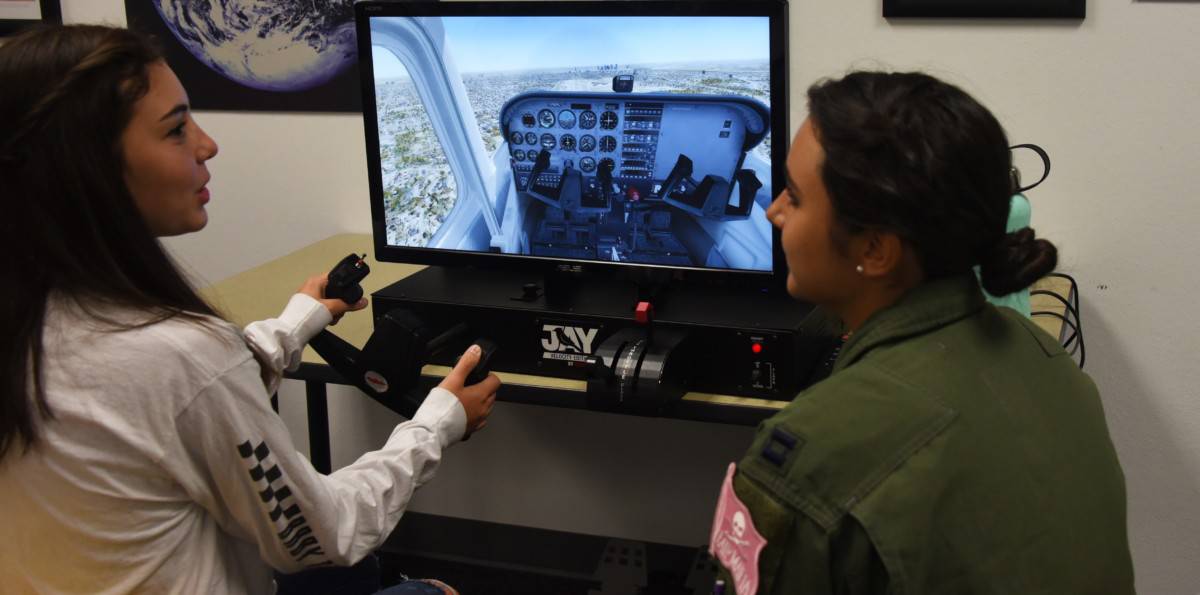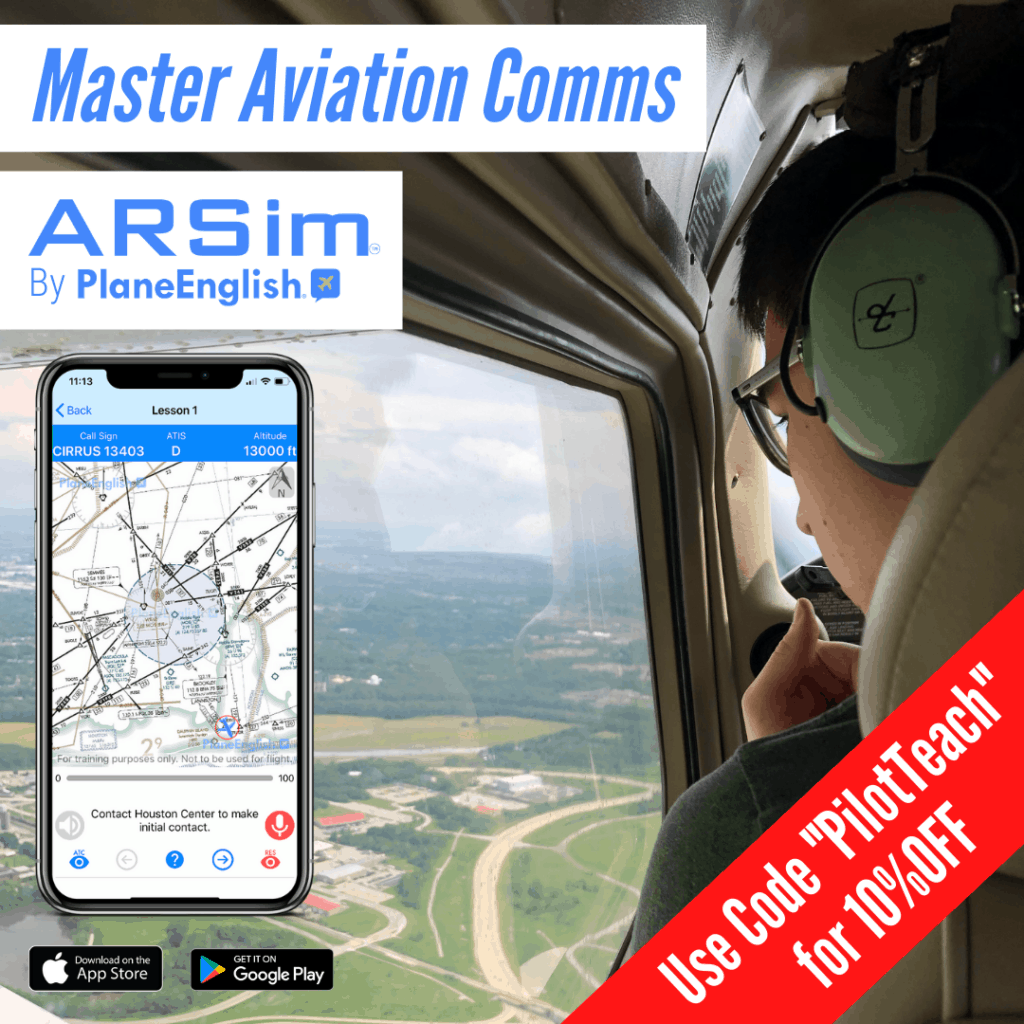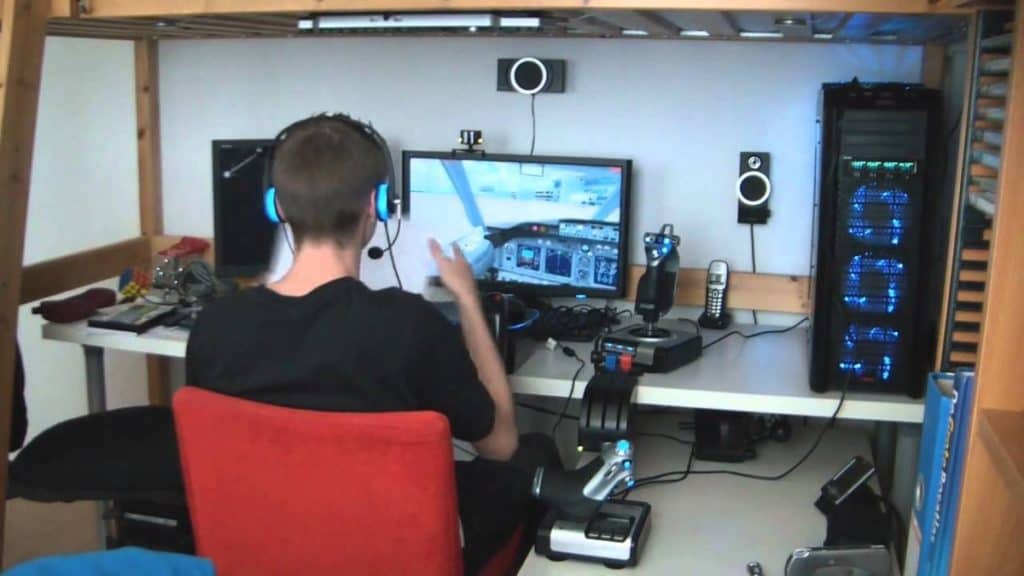
When I first arrived at flight school both of my roommates had flight simulators for their computers. One for helicopter and one for fixed-wing. Even back in 2006, I was blown away at how realistic they were and how often they practiced on them – I was quite jealous of not having my own!
A PC flight simulator can be a great training device for practicing procedures, checklists, emergencies, and pre-flying routes for students and novice pilots. However, PC simulators are unable to replicate the motion, feel, turbulence, and handling which can only be accomplished in a real aircraft.
Throughout my career, I have used many simulators from the PC-based desktop type through to $30M full motion, Level D aircraft simulators and I am a great believer in any simulator training, provided it is used in the right way.
Like any flight training tool, used correctly it can be very valuable. Used incorrectly it can really develop some bad habits that can be really costly to break!
What are PC Flight Simulators Great For?
Flight simulators like X-Plane and Microsoft Flight Simulator are the world’s top home-based simulators and they are incredible trainers for the following areas:
1. Aircraft Checklists
Checklist familiarization when new to an aircraft is very important. Missed items on a checklist can lead to the aircraft being configured into a dangerous setup and carefully following a checklist is paramount. Using a simulator or ‘Sim’ is perfect for developing good memory of each step.
Engine Start, Pre-Flight, Landing, Engine Stop etc are great for practicing on a sim and ensuring good checklist habits.
2. Cockpit Instrumentation Familiarization
Cockpit rendering on the software is fantastic and providing the real aircraft that you fly matches the simulated aircraft the Sim can be a perfect training device for developing muscle memory of where to reach to access each instrument.
Even if the instrumentation is slightly different it is still a very useful tool and the nice amount of included cockpits, plus the additional ones you can download as Add-On’s make finding your aircraft a breeze (unless you are learning in some obscure aircraft!).
3. Developing Instrument Scans
Developing a scan of the instruments when early into a flying career is very important to ensure no data or information is missed. Instrument scans are the heart of instrument flying and the correct technique is required, but that technique requires practice.
When first learning to fly using a simulator of the same aircraft the student flies is a great way to build muscle memory on which instrument they should be looking at and at what time in the checklist or flight portion.
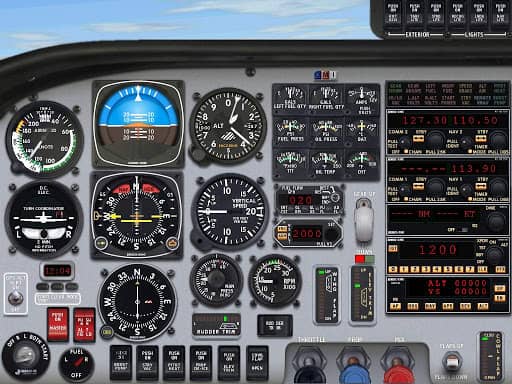
Practice in the sim saves time and improves the cockpit workflow and mental anxiety when in the real aircraft and the student cannot find the ‘Carb Temp’ gauge for example.
4. Radio Communications Practice
For every student, first talking with Air Traffic Control (ATC) can be a nervous part of learning to fly. Simulators and a friend or instructor allow a student to practice important calls while maneuvering and flying a circuit on the PC.
Simulators are also great for building confidence before flying into nearby busy airspace. With the help of a seasoned instructor who knows the busy airspace, practicing the flight in and out of the busy airspace can expose the student to possible radio communications while simulating the flight. This practice can really help relieve the anxiety of a student on a real flight.
One of the best ways to learn the aviation language is with a simulator like this one from PlaneEnglishSim.com.
A Great tool will help you master your radio without feeling shy and turn you into a confident pilot.
An added bonus is that they will give you 10% off by using the code PilotTeach at checkout!
Click Here to head over to PlaneEnglishSim.com and see their Super Helpful courses for both VFR & IFR, new pilots, and veteran pilots – They have it all and you will not regret using their tools! I used a software very similar back when I learned many years ago and it was a Game-Changer!
5. Emergency Procedure Practice
Many emergency procedures require memorization of the checklist and developing the muscle memory of executing those actions. In a well-equipped PC sim, running the emergency checklist can be done over and over again with ease.
When an emergency occurs or an instrument fails having the knowledge to quickly deal with the moment without having to pull out the checklist, especially at a critical phase of flight can make a huge difference to safety.
The pilot knowing whether they have to land immediately or continue to the next airport is extremely important, especially if the student is on their first solo cross-country flight!

Join My Newsletter & Get Great Tips, Information and Experiences To Help You Become a Superb Pilot!
6. Navigation Practice
When first learning how to fly, the introduction of navigation devices like VOR’s, NDB’s, Compass, and Dead Reckoning can be completely alien to a student. Learning how to read, interpret, and fly based on the navigation instruments takes practice. Setting up the instrument to work correctly also takes practice.
After being introduced to the navigation device by the flying instructor a sim makes it great for a student to come home and immediately practice the lesson from the real aircraft and play around with the NAV instruments until they master them. Following instructional videos while sitting at the sim can really solidify each instrument’s operation.
7. IFR Procedures
Flying IMC and under the control of ATC is all about procedures. When a pilot is new to the IFR world of flying it can feel like being on another planet. The simulator allows students to practice flying departure, cross-country arrival, and instrument procedures with ease over and over again.
Practicing IFR procedures in a real aircraft is limited to the amount of time the pilot flies, by using a sim, the student is able to fly 20 ILS procedures in an afternoon and really become familiar with the instrument scan, the procedure plates, the maneuvers, and possible ATC communications if practicing with a friend or even with some of the ATC Add-Ons that are now becoming available.
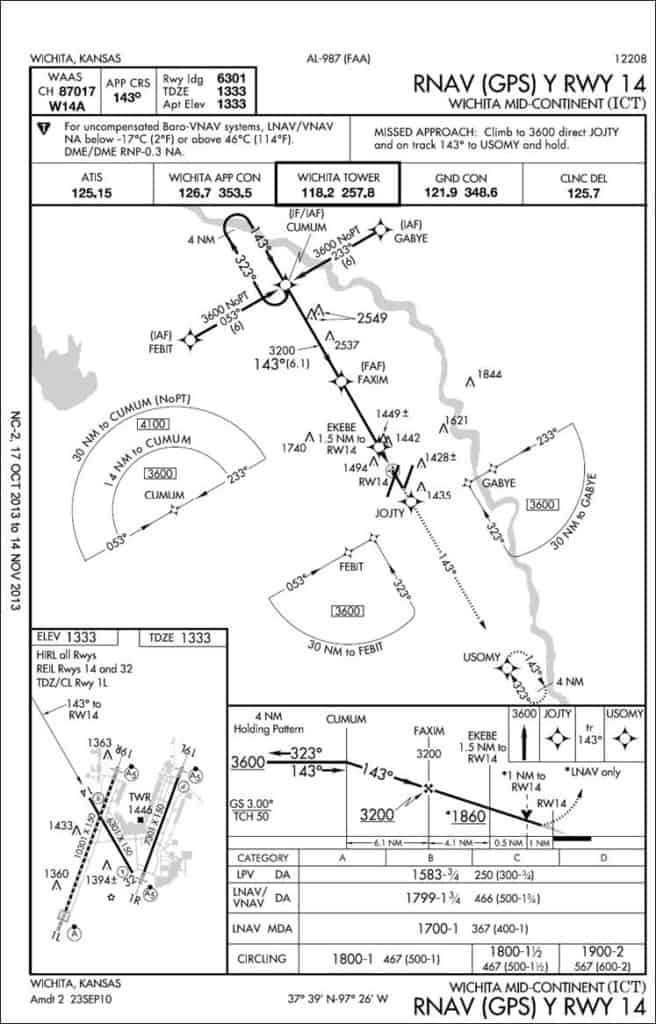
8. Busy Airspace Procedures
Just like practicing ATC communication in busy airspace mentioned above, there are usually entry routes and procedures used a lot for VFR aircraft. Knowing these procedures and routes is very important to not get yelled at by ATC, especially when the airspace is really busy.
Many VFR routes in busy airspace use landmarks for reporting points and flying the routes on a well-rendered sim can really help practice good airmanship ready for when the pilot flies into the airspace for real.
Trust me, there is nothing worse than trying to find a landmark when in busy, unfamiliar airspace and ATC is beginning to get frustrated with you. Google Earth is also a great tool for becoming familiar with the areas depicted on the charts or procedures.
Learn More…
Try These Articles:
* Helicopter or Airplane: Which is Easier To Fly?
* Cost To Become a Pilot: All the Certificates Compared!
What Downfalls Do Flight Simulators Have?
As a training tool simulators have their place and there are many things that cannot be taught in a PC-based, desktop simulator.
1. Lack of Depth Perception
The main problem with any simulator, even the $30M ones I have flown in and that is depth perception when low to the ground. The visual renderings are just not good enough yet to allow a pilot to easily judge the last 20ft if not higher, which is rather important when landing!
Without depth perception, it can be hard to finesse an aircraft onto the ground which is especially important in high-wind and cross-wind landings. These can only be truly practiced in a real aircraft.
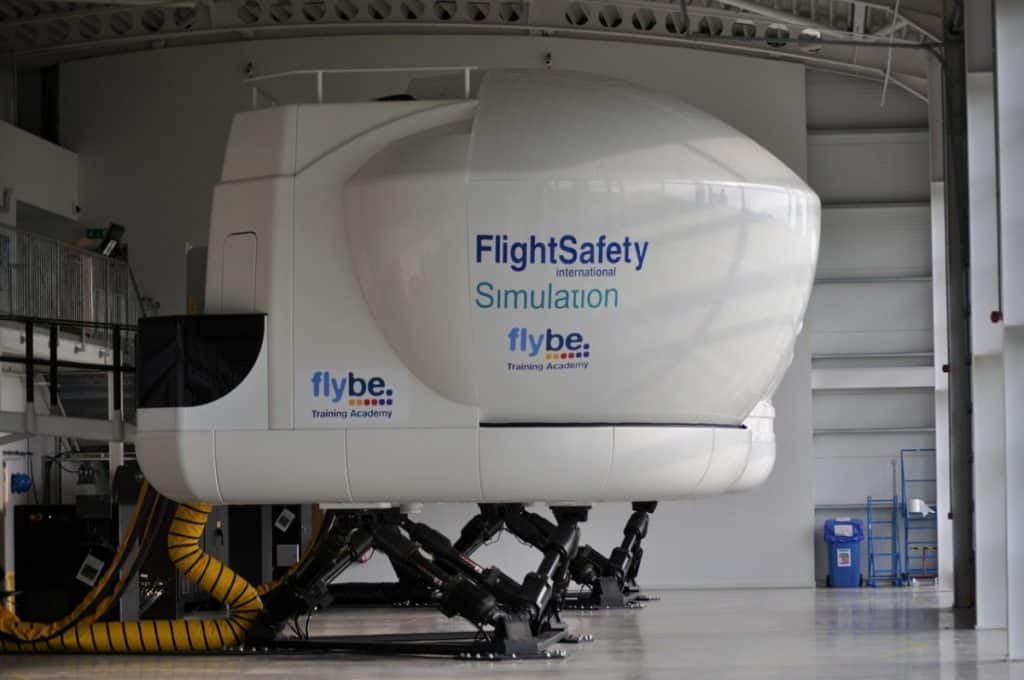
2. Lack of Feel
Any seasoned pilot will tell you that the way an aircraft feels, moves, and vibrates can tell the pilot a lot. You may have heard the sayings “Flying By The Seat of Your Pants” or “The Aircraft Talks To You”? Developing these is a huge part of learning to fly.
How the aircraft feels, what your body feels during a turn, a climb, turbulence, etc are very important sensory inputs that a pilot needs to experience and develop to truly fly. Sitting in a stationary chair in front of a computer screen will not give you these.
3. Weather
Handling an aircraft in high winds, turbulence, and poor weather is all about becoming a pilot. When I was doing my Private Helicopter License it was in a location that was always windy – Every lesson drained me like there was no tomorrow, but now I can hover and work in any wind without even thinking.
A sim is not able to teach a pilot how to handle the aircraft in weather. A pilot needs to feel what it’s like to get a gust of wind when in a light Cessna 152 just before the wheels touchdown so they can react in the correct manner for instance.
Although you can put wind and weather into a sim, all you will see is the aircraft drifting or bouncing around on the screen. Your body will not feel it.
4. Aircraft Handling
Handling the controls of an aircraft and manipulating the controls are two very different things even though they may be thought of as similar.
Any person can Manipulate the controls of a simulator and make the digitized aircraft follow those inputs.
Handling an aircraft involves all the things mentioned in this article, many of them the ones you cannot do on a simulator. Feel, noise, vibration, weather, sensory illusions, and perceptions all form part of how a pilot handles an aircraft.
Learn More…
Try These Articles:
* Flight School Requirements – Are There Any For Joining?
* How Hard is it to Become a Pilot? An Instructor Tells All!
Do Simulator Hours Count Towards Pilot Certificates?
Many students often ask me if the time on a flight simulator can be logged and the answer is ‘NO’ to PC-Based simulation software.
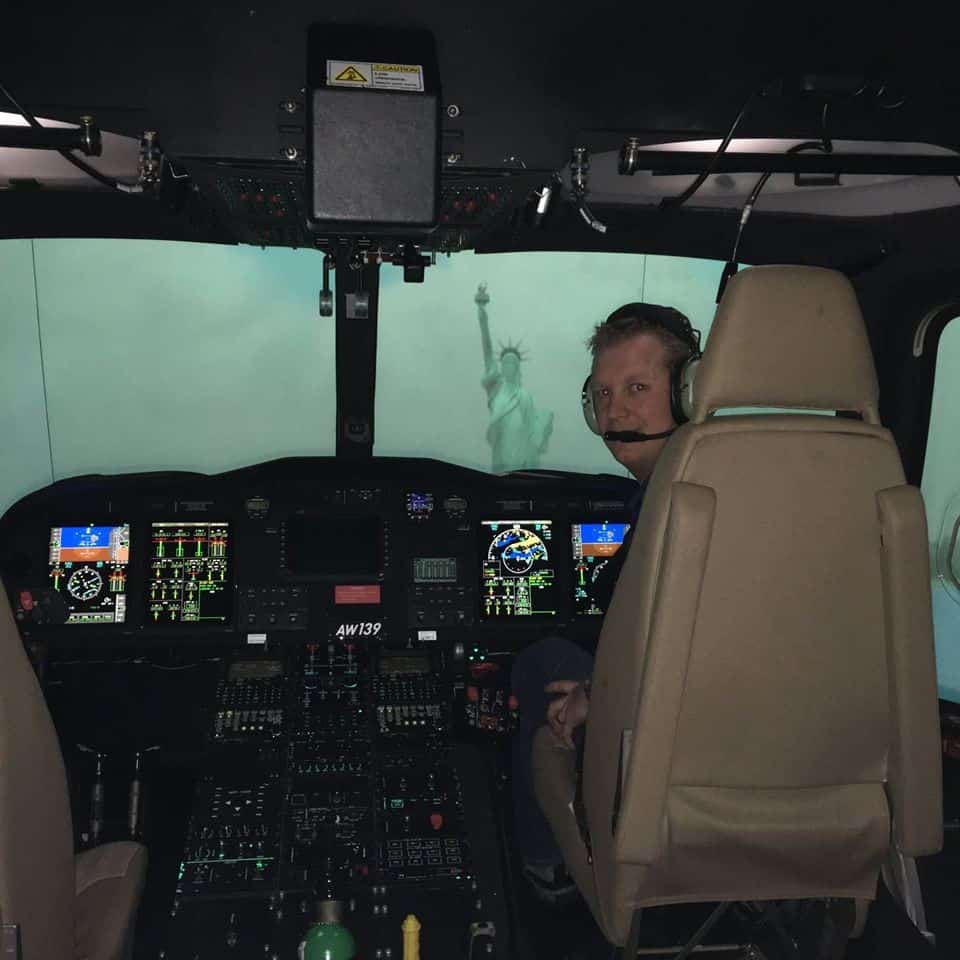
The only time simulated or synthetic flight time can legally be logged is in an FAA-certified, approved, and registered Simulator. Each certified simulator has to be permanently installed at a location and it then gets issued an ID, the sim equivalent of a tail number from an aircraft.
Only then can the sim be logged and counted as hours flown.
For more information on the FAA standards for flight simulators please check out this FAA Advisory Circular.
What are the Most Popular PC Flight Simulator Setups?
Flight simulators can be very simple training tools or people have turned entire rooms into fully working cockpit replicas with incredible detail.
To get started with a basic desktop setup you will need the following:
Software:
This is the beating heart of the training aid and there are two software programs on the market used by 99% of people:
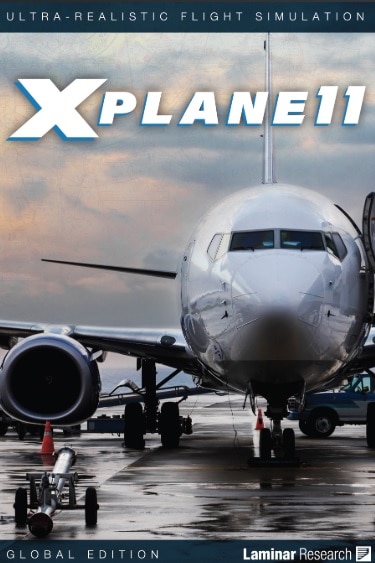
X-Plane
X-Plane by Laminar Research is by far the most popular among pilots. It is available as a digital download or DVD set. There are many, many Add-On features like aircraft, weather, ATC, and many more.
You can find the latest edition of X-Plane here at Amazon.com
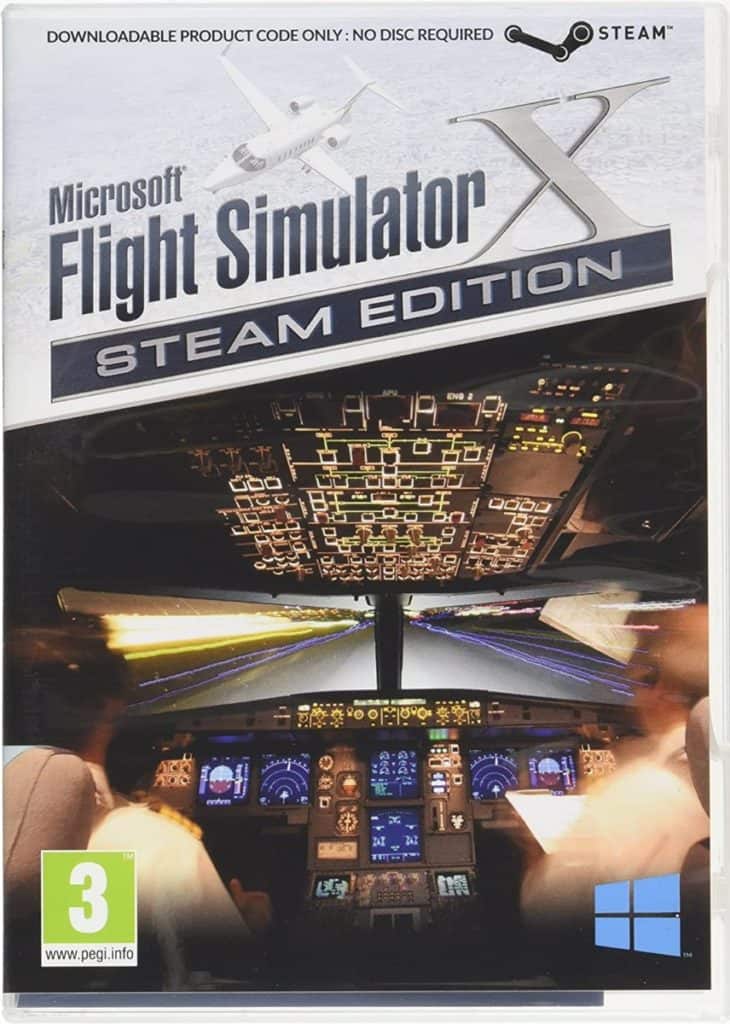
Microsoft Flight Simulator
The software that started it all! The legendary Flight Simulator from Microsoft keeps getting better and better. The latest edition is the Microsoft Flight Simulator X: Steam Edition with the greatly anticipated release of Microsoft Flight Simulator 2020 due any day now.
You can find the many editions of Microsoft Flight Simulator Here at Amazon.com
Fixed Wing Setup:
For most fixed-wing pilots the addition of a full set of flight controls turns the software from being a game into a simulator. Below are the most popular controls available:
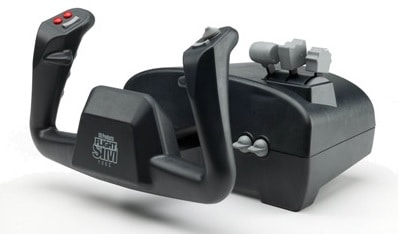
Yoke
To be able to simulate Pitch and Roll a Yoke is required. Many are available with included levers for throttle and flap control, or some come without.
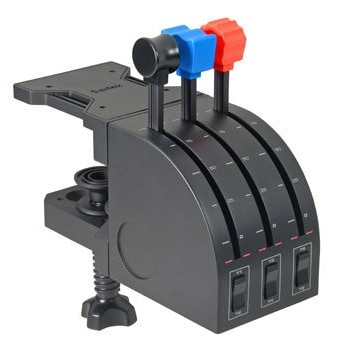
Throttle Quadrants
For those pilots wishing to have improved muscle memory while using Flaps, Throttle/s, and Landing Gear a wide array of desk-mount throttle quadrants are available that can be mounted in any position a pilot wishes.
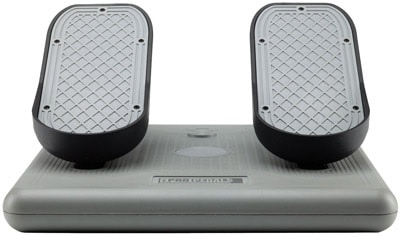
Pedals
For pilots to control the Yaw of the aircraft and activate brakes, a simple Pedal Board is required.
There are some great deals on bundled control packages or mix and match the control devices to suit your particular preference and installation.
You can find a great selection of Yokes, Throttle Quadrants & Pedal Controls Here at Amazon.com

Helicopter Setup:
For most helicopter pilots the addition of a full set of flight controls also turns the software from being a game into a simulator but requires slightly different controls to their fixed-wing counterparts.
Below are the most popular controls available:
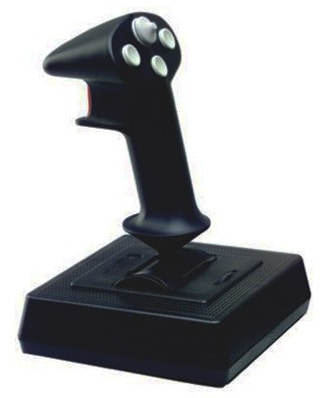
Cyclic
To be able hover and to simulate Pitch and Roll a Cyclic or Joystick is required. Not only can these be used for helicopters, but also for jets and fixed-wings with side mounted joysticks.
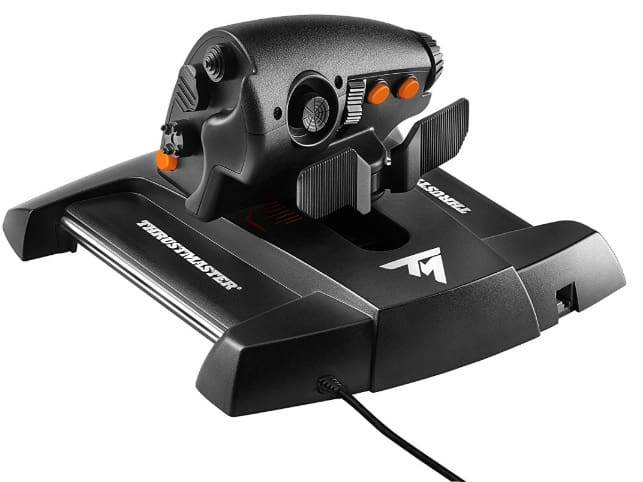
Collective
Trying to find a budget-friendly Collective is quite tough. For most sim pilots, the use of a horizontal Jet throttle works well. For a realistic floor mounted Collective control you are looking at least $500 and more.

Pedals
For pilots to control the Yaw of the helicopter and activate brakes on a wheeled helicopter a simple Pedal Board is required.
Just like the fixed-wing controls above, there are also some great deals on bundled control packages or mix and match the control devices to suit your particular preference and installation.
You can find a great selection of Cyclics, Collectives & Pedal Controls Here at Amazon.com
Add-Ons & Upgrades:
The upgrade and add-ons you can add to a PC-based simulator are as deep as your bank account will go!
You can buy additional monitors, software addons, more realistic flight controls, seats, cockpit mockups, radio panels, GPS inserts, and the list goes on. Google some Home Flight Simulator Installations and you can see how far you can take it.
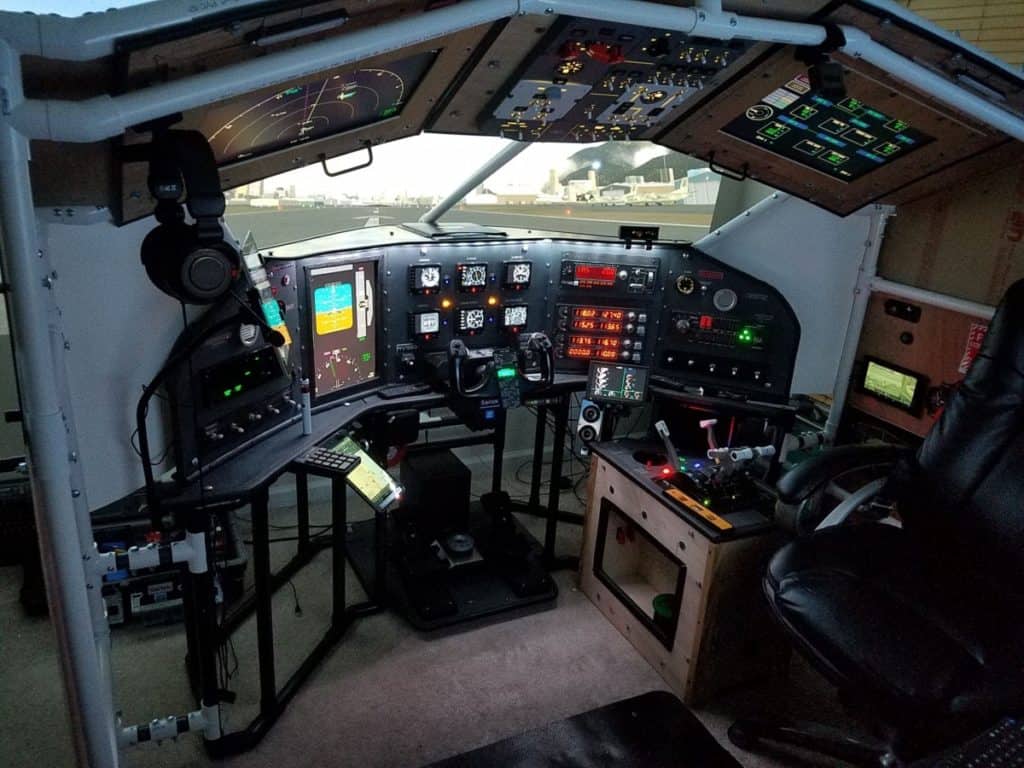
If you wish to find ideas for how you can create your own home flight simulator then please check out my Flight Simulator Equipment Collection in the Pilot Teacher Store.
To Finish
To truly fly learn to fly an aircraft, an aircraft has to be used, but the use of a PC-Based flight simulator can be very beneficial to learning procedures, checklists, and theory which can save time, cost, and really maximize the efficiency of a real aircraft flight.
For the cost of a few hundred dollars, a simple flight simulator setup added to a home computer will pay for itself in improved learning and saved flight time within months.
Most flight schools now have some level of flight simulator because they are very good for what they do, but to really learn how to fly you have to strap on the mechanical wings!

